Corduba (Córdoba)
Q2997165Corduba: city in ancient Andalusia, modern Córdoba.
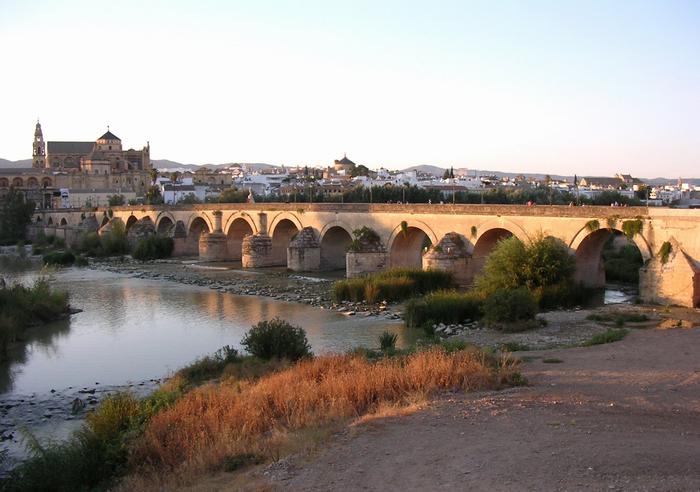
Córdoba already was a town of some importance when the Carthaginians conquered Andalusia. They gave it a new name: the Phoenician element Kart, "town", is still recognizable. The Romans conquered the region in the last decade of the third century BCE, gave the town the status of colonia in 152 BCE, used the city as military base in the war against the Lusitanian leader Viriathus, and made it the capital of their province Hispania Ulterior (which was later called Baetica).
The Via Augusta connected the city with Carmo and Seville in the west, and Tarraco in the northeast. Two milestones that once could be seen along this road are now at the entrance of Córdoba's famous mosque/cathedral, which is a reused temple.
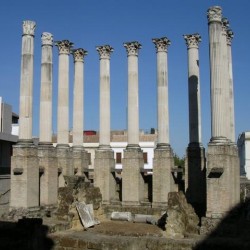 Cordoba, Remains of a temple, probably dedicated to the emperor. |
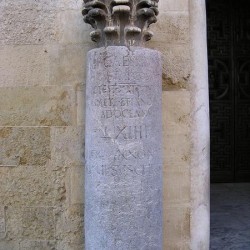 Cordoba, Milestone |
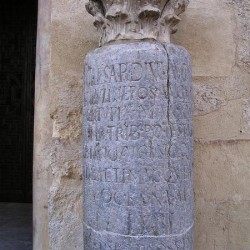 Cordoba, Milestone |
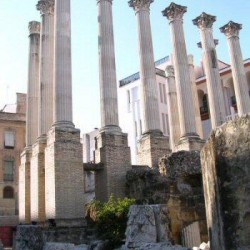 Cordoba, Remains of a temple, probably dedicated to the emperor. |
The most famous monument of the city is the Roman bridge across the Guadalquivir. The great river is navigable up to this point. From here, olive oil and ores were transported to the Atlantic Ocean and to the Mediterranean Sea. The bridge was built by the emperor Augustus and has often been repaired. This monument was part of a larger plan to develop southern Spain; another aspect was that many veterans were settled in this area (from the Sixth and Tenth legions).
Several illustrious Romans were born in Córdoba: the elder and younger Seneca and the poet Lucanus for example. Bishop Ossius (or Hosius) is the author of the Creed that was agreed upon during the Council of Nicaea (325). Traces of his church, the Saint Victor, have been discovered beneath the mosque.
In Late Antiquity, the Visigoths tried to capture the city, but the inhabitants received support from the Byzantine emperor Justinian, and Córdoba was taken only in 584. A century and a half later, it became the capital of the Emirate of Córdoba.